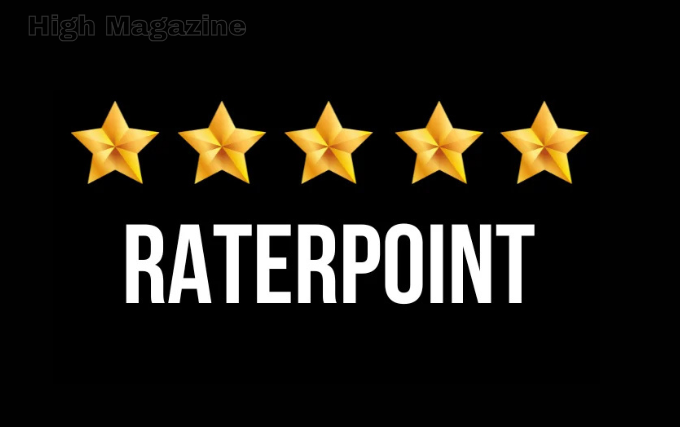Having trustworthy tools to gauge performance, get feedback, and oversee initiatives is crucial in the always changing digital landscape. One such platform that has drawn notice for its many features meant to assist individuals and organizations in effectively achieving their objectives is RaterPoint.
What is RaterPoint?
RaterPoint is a flexible software platform made to make performance reviews, project management, and feedback gathering more efficient. Its main objective is to give businesses a centralized way to evaluate output, enhance communication, and promote expansion. The platform is a popular option for a variety of demands because it serves a broad range of industries, including corporate businesses and educational institutions.
Key Features of RaterPoint
RaterPoint offers a remarkable feature set designed to satisfy the needs of contemporary companies. Here are a few of its notable features:
Performance Evaluation Tools
RaterPoint’s performance evaluation mechanism is one of its main advantages. Managers and team leaders can evaluate employee performance using configurable metrics thanks to this functionality. To pinpoint areas that need work, users can create thorough reports, monitor their progress, and set clear targets. The system guarantees a comprehensive approach to performance measurement by supporting both quantitative and qualitative assessments.
Feedback Collection
Growth relies heavily on feedback, and RaterPoint shines in this area by offering user-friendly solutions for getting opinions from a range of stakeholders. Peer evaluations, anonymous surveys, and real-time feedback systems are all made possible by the platform. These resources help companies develop a culture of openness and ongoing development.
Project Management
RaterPoint incorporates project management tools that streamline teamwork, task distribution, and deadline monitoring. Through visual dashboards, users can assign roles, define comprehensive project timetables, and track progress. RaterPoint is a complete solution for teams looking to meet deadlines and provide excellent outcomes because of the smooth integration of performance and project management tools.
Customizable Dashboards
One of RaterPoint’s key advantages is customization. Users can customize their dashboards on the platform to show the most pertinent data. Users can customize their dashboards to suit their own requirements and preferences, whether they are tracking individual KPIs, team performance, or project timeframes.
Data Analytics and Reporting
The core of successful enterprises is data-driven decision-making. Users can obtain actionable information with RaterPoint’s sophisticated analytics and reporting solutions. The platform produces comprehensive reports on feedback patterns, project milestones, and performance metrics. Businesses can use these information to pinpoint bottlenecks, make well-informed decisions, and streamline processes.
Integration Capabilities
RaterPoint easily interfaces with widely used third-party products, including data visualization applications, communication platforms, and CRM systems. Because of this interoperability, users may integrate RaterPoint with their current workflows, eliminating the need for extraneous tools and increasing efficiency.
Scalability and Flexibility
RaterPoint scales to fit your needs, regardless of how big or small your company is. As their needs change, businesses can add users, features, and modules thanks to the platform’s adaptable framework. Because of its scalability, it is the perfect option for companies who expect to expand or change the scope of their operations.
Benefits of Using RaterPoint
RaterPoint adoption has many benefits, from increased decision-making to increased productivity. Here are a few of the main advantages:
Enhanced Collaboration
Team members can communicate more effectively thanks to RaterPoint’s collaboration features. The platform breaks down communication silos and guarantees that everyone is in agreement by centralizing information and offering real-time updates.
Improved Performance Monitoring
Organizations can set precise benchmarks and monitor progress toward predetermined objectives with RaterPoint’s performance evaluation tools. Teams are inspired to give their best work when there is clarity, which promotes accountability.
Data-Driven Insights
Organizations may turn raw data into insights that can be put to use with the help of the analytics and reporting features. Businesses can make strategic decisions that promote efficiency and growth by recognizing trends and patterns.
Time and Cost Efficiency
RaterPoint saves time and money by combining several features into a single platform, eliminating the need for separate tools. Teams can swiftly adopt the platform and begin to benefit from it because to its user-friendly interface, which also reduces the learning curve.
Customization for Diverse Needs
Because of its adaptability, RaterPoint can serve a wide range of business types and industries. Because users can modify features to meet their own needs, the platform can be used in a variety of scenarios.
Use Cases for RaterPoint
Because of its adaptability, RaterPoint can be used in a variety of settings. Here are a few typical use cases:
Corporate Performance Management
RaterPoint is used in business environments to monitor departmental objectives, assess worker performance, and expedite project completion. The extensive reporting capabilities of the platform give management a clear picture of how well the company is performing.
Educational Institutions
In corporate settings, RaterPoint is used to track departmental goals, evaluate employee performance, and speed up project completion. The platform’s comprehensive reporting features provide management with a clear picture of the company’s performance.
Freelancers and Small Teams
RaterPoint’s project management tools are useful for small teams and freelancers. They can achieve deadlines, maintain organization, and interact with clients more successfully thanks to the platform.
Customer Feedback Management
RaterPoint is used by companies who prioritize customer happiness to collect client feedback. With the use of the platform’s analytics and survey tools, businesses can determine what their customers need and adjust their offerings accordingly.
Limitations of RaterPoint
Although RaterPoint has many benefits, there are drawbacks as well. The following are some potential shortcomings of the platform:
Learning Curve for New Users
RaterPoint’s vast feature set may first overwhelm new users, even with its user-friendly design. For users to fully utilize the platform, proper onboarding and training are crucial.
Subscription Costs
RaterPoint’s subscription fees could be a deterrent for freelancers or smaller enterprises with limited funding. Although the site offers great value for the money, users who are concerned about costs might need to balance the advantages against their financial limitations.
Dependence on Internet Connectivity
RaterPoint is a cloud-based platform, so it needs a steady internet connection to work properly. Businesses who operate in places with erratic connectivity might find it difficult to regularly use the platform’s functionalities.
Conclusion
For people and organizations looking to succeed in digital tests and surveys, RaterPoint is an essential tool. It is a vital tool for obtaining actionable insights because of its extensive analytics, customizable capabilities, and easy-to-use design. RaterPoint provides the accuracy and dependability required to meet your objectives, whether you’re a professional looking to improve decision-making or a company looking to increase customer happiness. It enables users to make well-informed, data-driven decisions by streamlining the process of gathering and analyzing feedback. RaterPoint is a complete solution for anyone wishing to take advantage of the potential of intelligent assessment systems, not just a platform.


